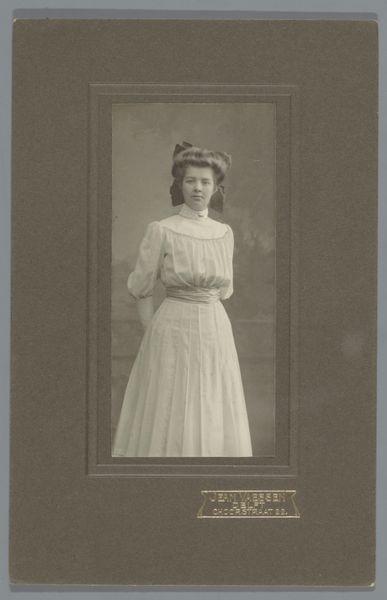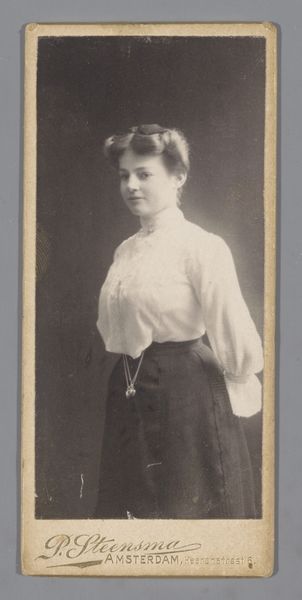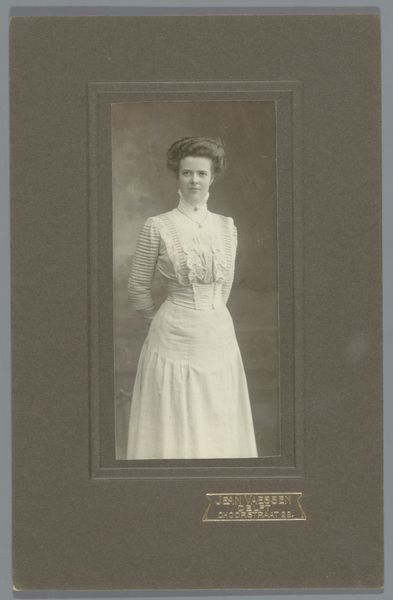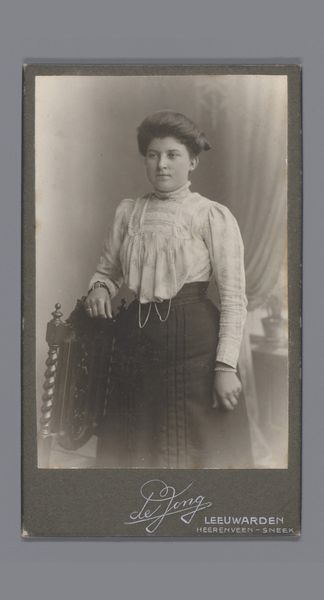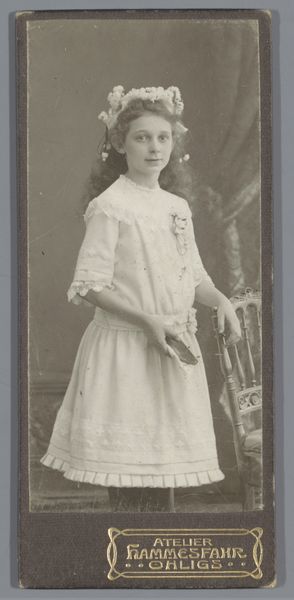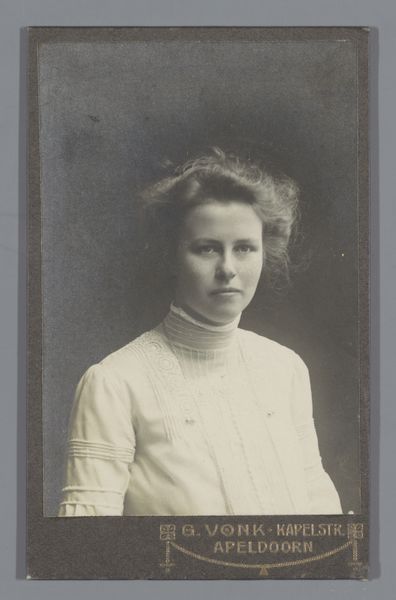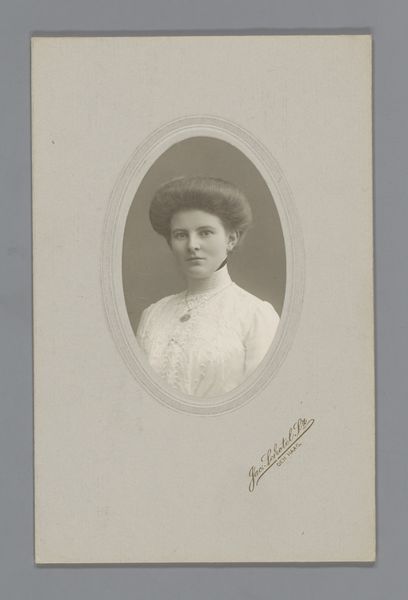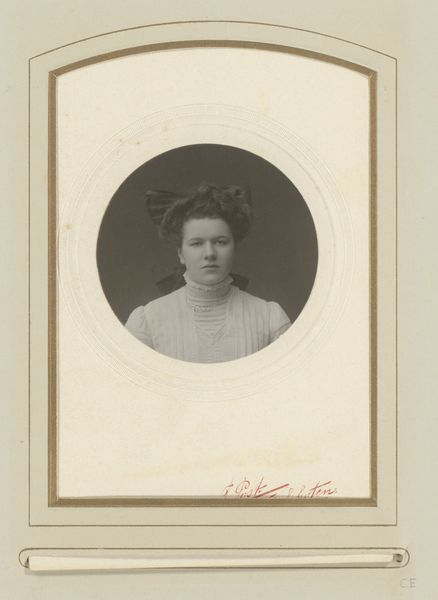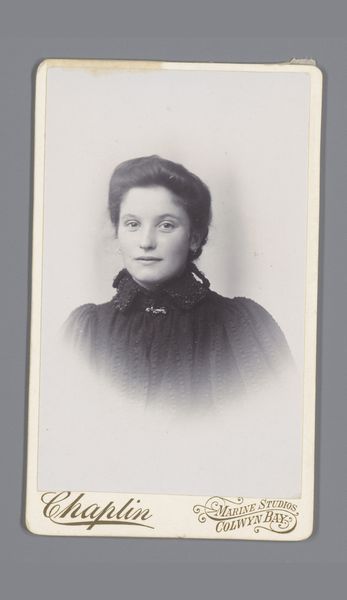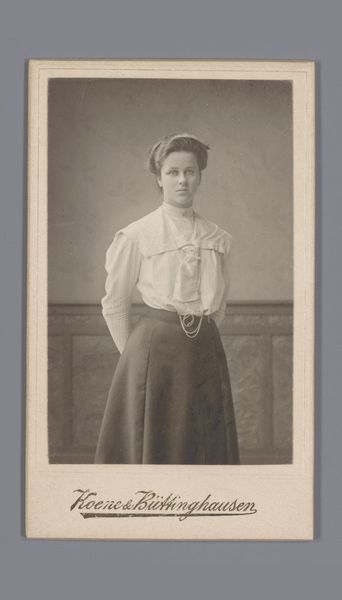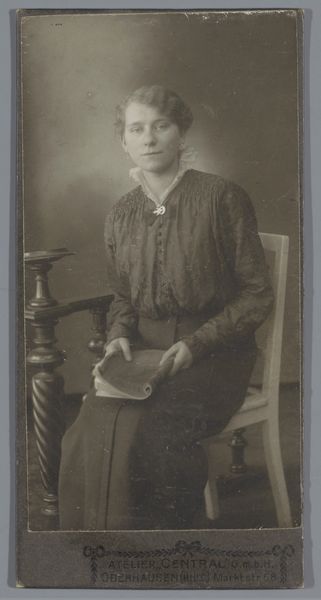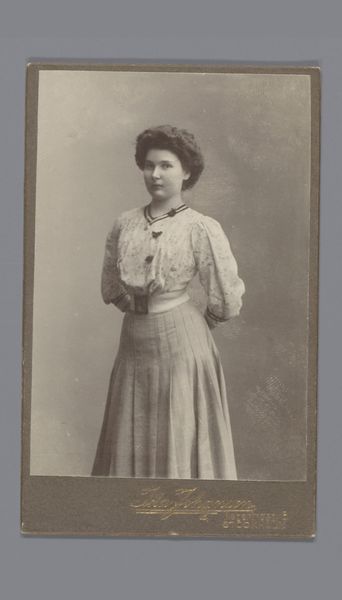
photography
#
portrait
#
photography
#
historical fashion
Dimensions: height 102 mm, width 45 mm
Copyright: Rijks Museum: Open Domain
Curator: Welcome, everyone. Here we have an interesting studio portrait from between 1900 and 1920, titled "Portret van een onbekende vrouw", meaning "Portrait of an Unknown Woman," captured through the medium of photography by J.W. Wentzel. Editor: The sepia tones immediately evoke a sense of nostalgia, but there’s also something profoundly modern about her direct gaze. It's simple, almost stark, in its composition. Curator: It is quite intriguing, especially when considered alongside prevailing social expectations of women during that period. Notice her posture; though seemingly demure, there’s a subtle assertion of self-possession. She's not entirely defined by the elaborate fashion of the day. Editor: Indeed. The formal structure is classical—the strong vertical lines created by her clothing, the carefully balanced asymmetry in the composition, yet she has a certain aloofness. I am wondering, can you feel the structural relationships between the various masses—the skirt, the sleeves, the hair? They all combine into one balanced, formal structure that dominates the image. Curator: Right, she’s presented in a way that simultaneously conforms and subtly resists societal norms. The ‘historical fashion,’ as some might put it, is undeniably there – the high-necked blouse, the up-do hairstyle. However, there’s also an understated confidence; a hint of individualism that disrupts a purely conventional reading. One wonders about her place, her context... What challenges, or what opportunities, were uniquely available to her, that would not have been accessible to her foremothers, that inform her social identity in turn? Editor: It’s the very subtlety in the arrangement of forms, like that flower detail on the blouse, which makes the viewer linger, compelling me to discover the formal structure through the combination of visual elements, a composition based in vertical and horizontal lines, and an asymmetry to challenge it all at once. Curator: It allows us a peek into that period in time, a moment where women were both contained and also actively shaping the trajectory of the early twentieth century, wouldn't you agree? The photograph itself functions almost like a sociological document of that transformation. Editor: Perhaps, yet the abstract relationship of light, line, and texture transcend documentation. I depart now with a refreshed admiration for what a basic approach can communicate about any artwork in the world. Curator: I agree, and on my part, an awareness of how deeply artworks of the past can teach us about the changing position of individuals as we look towards the future.
Comments
No comments
Be the first to comment and join the conversation on the ultimate creative platform.
